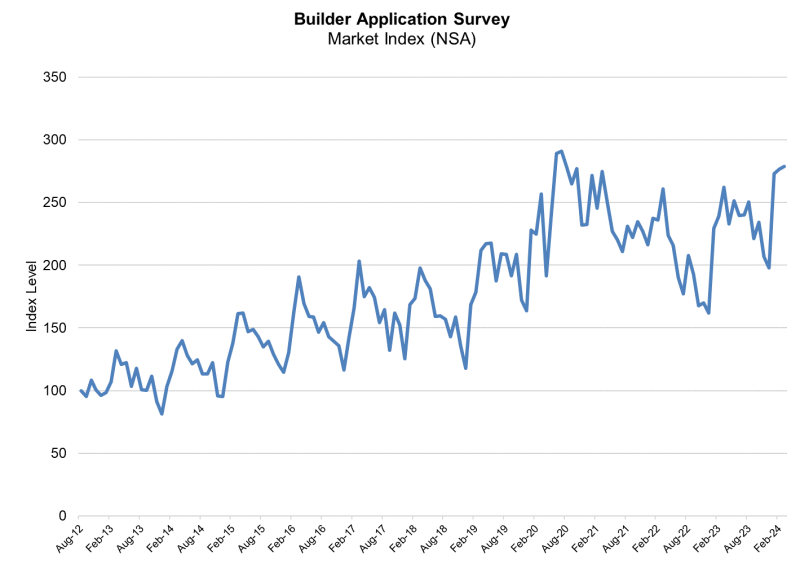Advertisement
The rise and fall of the broker
Forward on reverse: Insights for marketing to maturityAtare E. Agbamureverse mortgage, origination, marketing, hucksterism
My office phone rang the other day. I picked up the receiver and
hung up almost immediately in disgust. The caller was a computer,
delivering the pre-recorded message of a mortgage industry trainer.
Why did I react the way I did to this "caller"? The
eardrum-splitting, rapid-fire sales pitch was only part of it. The
other was that like most second-half consumers (age 40-plus), I
have become less tolerant of mindless hucksterism. I began this
series in September to share insights I gained while researching
and writing my upcoming book, a guide to marketing and originating
reverse mortgages.
In Part I ("Unlearn 20th century marketing," The Mortgage Press,
September 2005), we concluded that in order to learn how to market
to maturity, we must first unlearn the 20th century marketing
paradigm, or worldview, which is built around hucksterism.
According to my friend and mentor, David B. Wolfe, co-author of the
pioneering marketing book "Ageless Marketing," hucksterism is "the
aggressive, pushing approach in marketing which seeks to conquer
and overwhelm and manipulate consumers." Wolfe asserts that in the
21st century, the marketer has to be a healer, helping consumers
"process their lives."
In Part II, ("A different kind of customer," The Mortgage Press,
October 2005), we argued that the reverse mortgage customer is a
"different kind of customer." It is not enough to know a customer's
age, home equity position, income, address, zip code or other data
that can be fed into a computer. We must negotiate our way into the
hearts and minds of the new lords of the marketplace. The
two-by-four approach to marketing is for those who are stuck in a
youth-dominated marketplace and culture of a bygone era. Marketing
is about influencing human behavior so that they can take actions
consistent with the marketer's suggestion. In our case, it is to
take out a reverse mortgage or to understand their value.
In this installment, we continue the "different kind of
customer" theme. What makes the mature customer different? To
answer this question, we need to put on lenses crafted by David
Wolfe from strands of developmental psychology and modern brain
science. I can hear you saying, "Atare, this is getting too nerdy
for me." I say, "Wait a minuteyour patience will be rewarded with
uncommon understanding." An understanding that will give you a real
competitive advantage as you create marketing communications to
connect with mature consumers in a 21st century marketplace
dominated by maturity.
As Mr. Wolfe is fond of saying, "Almost everything we know about
marketing, we learned and developed when youth ruled the
marketplace." This is no longer the case ... this is strategic
insight. Now, let's get on with some foundational material first.
It turns out that the human life circle and the four seasons have a
lot in common. To understand a customer, we must know the season of
life the customer is passing through. From this knowledge, we will
be able to design marketing communications that will resonate or
connect with that customer. It is common sense, but most of us in
this industry think that all we need to know about a customer is
their name, age, zip code, e-mail address, phone number and home
equity position. Then, we go on bombarding them with mindless calls
(or e-mails or junk mails) similar to the one I received from the
computer and call it "marketing." How can you "market" to consumers
when you cannot even get their attention because of your approach?
How can you persuade customers by offending them? Have we learned
anything from the Do-Not-Call phenomenon of recent years? How can
you open a lock without first studying the combination? Here are
the four seasons into which a customer's life circle is divided,
according to Wolfe:
•From birth to age 22+ = Spring
•From age 18+ to 40+ = Summer
•From age 38+ to 60+ = Fall
•From age 58+ and over = Winter
At each season of the human life circle, there are essential
human development goals we must accomplish. The push to achieve
these developmental aims is wired into our DNA over millions of
years of evolution, similar to our need for food, sleep or sex. We
have to have them.To comprehend human behavior systematically, we
must grasp these human advancement ends. In Part IV, we will
examine the human progress intentions of the spring and summer
years of the human life circle.
Think reverse. Move forward!
Atare E. Agbamu, CRMS is president of ThinkReverse LLC, a
reverse mortgage training and consulting firm based in the Twin
Cities and is a consultant with Credo Mortgage. Atare is regarded
as an emerging authority on reverse mortgages and is frequently
consulted by financial professionals and families across America.
His reverse mortgage interviews have been Webcast on MortgageMag
Live! He can be reached by phone at (651) 389-1105 or e-mail [email protected].
About the author





